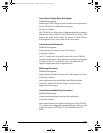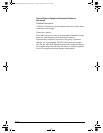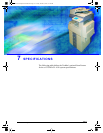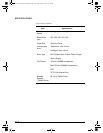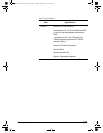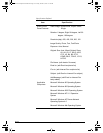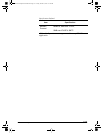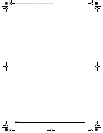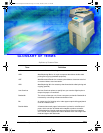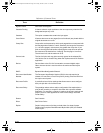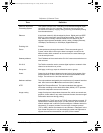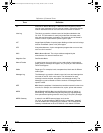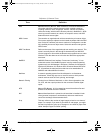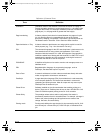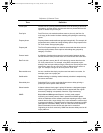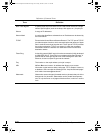
GL-1010 Scan Operator’s Guide 121
Electronic Document
Processing System
This system consists of the TOSHIBA e-STUDIO28/35/45 digital copier
connected to the GL-1010 controller. This allows users to enjoy the
convenience of walk-up copying, faxing, scanning, and network printing
from the same device.
Ethernet A local area network (LAN) developed by Xerox, Digital and Intel (IEEE
802.3). It is the most widely used LAN access method. Token Ring is
next. Ethernet is normally a shared media LAN. All stations on the
segment share the total bandwidth, which is either 10 Mbps (Ethernet),
100 Mbps (Fast Ethernet) or 1000 Mbps (Gigabit Ethernet).
Finishing Unit Finisher.
Frame A data packet sent through the network. There are several types of
Frames, which differ in the way the data is arranged. In order for the
different nodes within a network to communicate, the same frame type
must be setup for each.
Gateway address The IP Address of the router that the GL-1010 uses to access devices on
other subnets.
GL-1010 The Toshiba controller used to connect digital copiers to a network. Also
referred to as the device or printer.
Group sort Multi-page, multi-copy output is collated into sets or groups.
Gutter Gutter size is the distance between the two logical, facing pages of the
physical booklet. In other words, this is the size of the booklet's inside
margin. The minimum is 0 and the maximum is 150.
Hardware address The unique address assigned by the manufacturer of a network interface
card. Also known as the Media Access Control (MAC) address.
HTTP HyperText Transport Protocol. The Internet standard that supports
information exchange on the World Wide Web (WWW). HTTP provides
users with transparent access to the Internet.
Image overlay Image Overlays are independent document files, which can contain text,
graphics, charts, tables or any other document element, that are merged
with another document during printing.
IP Internet Protocol. The IP part of the TCP/IP communications protocol. IP
implements the network layer (layer 3) of the protocol, which contains a
network address and is used to route a message to a different network or
subnetwork. IP accepts “packets” from the layer 4 transport protocol
(TCP or UDP), adds its own header to it and delivers a “Datagram” to the
layer 2 data link protocol. It may also break the packet into fragments to
support the maximum transmission unit (MTU) of the network.
Definition of Common Terms
Term Definition
GL-1010 Scan Operator's Guide.book Page 121 Friday, October 5, 2001 10:30 AM



